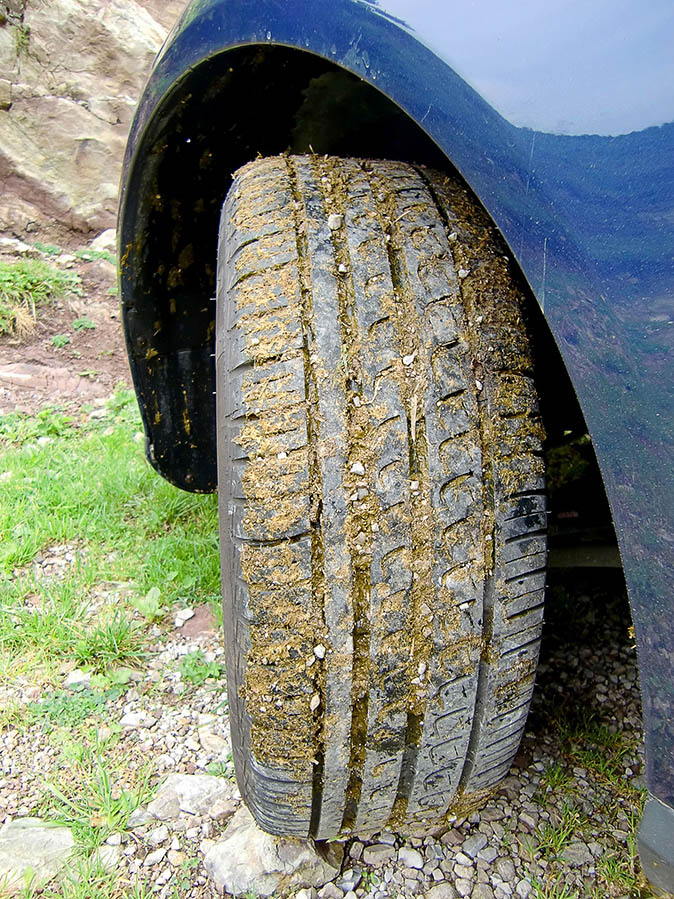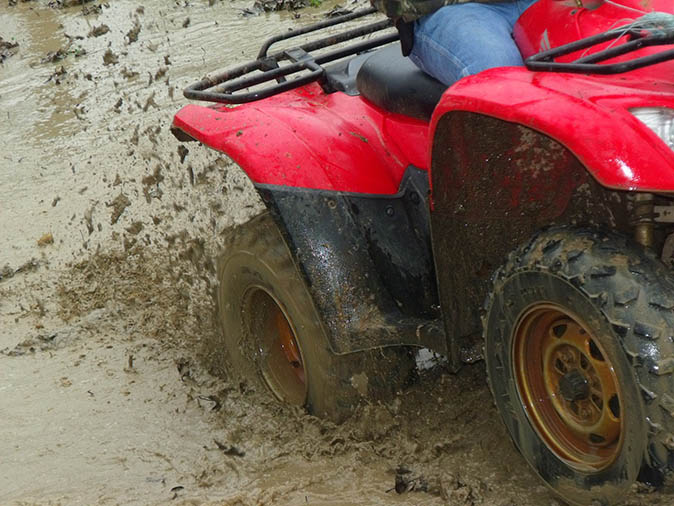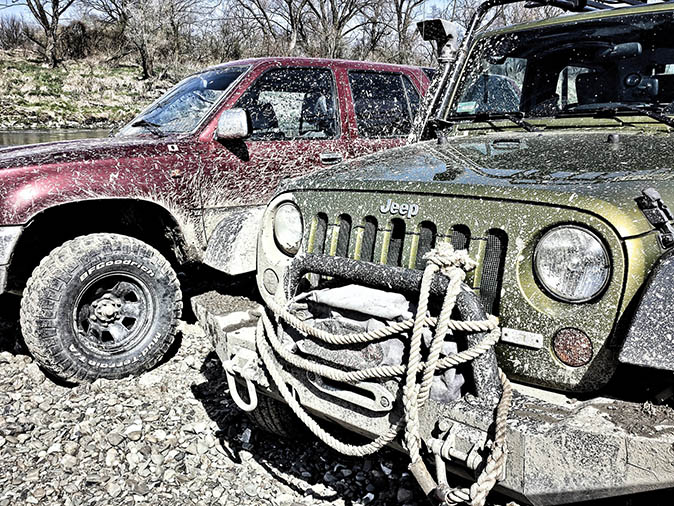Driving through muddy terrain: How to get you and your car safely through it
Whether it's flash flooding in summer or the usual winter deluge, Britain's weather means that mud is a real problem for those who have to drive off road. Here are our tips on how to handle it.

Driving through mud can be enormous fun – but it can also be scary. Thankfully there are things that you can do to make the experience safer and more enjoyable, from getting mud tyres to adapting your technique.
Here are some smart tips that will let you trek through the mud without a risk.
Get the right tyres
Only speciality mud tyres are really adequate for dealing with mud. Using all-terrain tyres which are also intended for off-roading won’t provide the same results, and let’s not even mention all-season tyres. So if you know you’ll be using your vehicle regularly for rough mud jobs, get proper mud tyres for it.

Once you’ve got the right tyres the next thing to ensure is that they’re inflated to the proper PSI (pounds per square inch). Why is it important? You need to have the entire weight of your vehicle push tyres through the mud and grip the solid ground underneath. You won’t achieve maximum traction if the pressure in the tyres is too low.
Check what the mud is hiding
Before hitting the mud, check how deep the mud is. Use a stick to sink it into the mud and check the depth through the entire stretch if you can. You’ll probably discover some objects hidden in it – large rocks or pits, for example.
Getting your boots dirty is well worth it for the sake of avoiding potential damage to your vehicle.

Engage 4WD and traction control – but know when to turn them off
If your vehicle doesn’t turn traction control on automatically in bad driving conditions, don’t forget to engage it manually – usually via a button on a dashboard. This will make trekking through the mud easier.
If you get stuck, however, this feature will actually hinder climbing out of the mud, so turn it off. Switching over to 4H from 2H (if you have a vehicle without permanent four-wheel drive) will also help boost traction. In the horrible mud, the 4L position will give you even better gripping power while the wheels will work more slowly.
Use a lower gear
High gears aren’t effective for trekking through mud. Change down to second or third gear to keep a steady pace on a muddy stretch. This will make your engine and wheels work harder. When you are done with it and already on the solid ground, move back into the higher gear again.

Avoid heavy accelerating or braking
Tyres need a consistent medium speed to effectively adjust to the terrain and surmount a slippery section of ground. If you slam on the accelerator, tyres will lose traction – when you need to accelerate, do it very gently. Don’t be hard on brakes as well; otherwise, tyres will skid.
Don’t get stuck in a rut
As far as possible, pick a path that is either rut-free part of where ruts aren’t deep - checking the mud beforehand will help with this. The deeper the rut, the higher your chances of getting stuck or – if the rut is deeper than your vehicle’s ground clearance – even of grounding. If that happens, you won’t get out of there without the help of a rescue team. Knowing your ground clearance is an essential part of knowing what your vehicle can handle.

Exquisite houses, the beauty of Nature, and how to get the most from your life, straight to your inbox.
-
 Meet the British perfumers squeezing landscapes into scents
Meet the British perfumers squeezing landscapes into scentsThe nuances of modern perfumery now allow a single drop to evoke an entire landscape. Amie Elizabeth White explores the native houses hitting the right notes
-
 A Georgian farmhouse that's an 'absolute gem' in an ancient village on Salisbury Plain
A Georgian farmhouse that's an 'absolute gem' in an ancient village on Salisbury PlainJulie Harding takes a look at the beautiful West Farm in a gorgeous Wiltshire village.
-
 Jewels of the Mediterranean: Luxury multi-generational villa holidays
Jewels of the Mediterranean: Luxury multi-generational villa holidaysThe Thinking Traveller have some of the finest villas in the Mediterranean on their books for multi-generational holidays. Here are just a few of the highlights.
-
 Code8: Beauty on Burlington Arcade
Code8: Beauty on Burlington ArcadeCome along Burlington Arcade with Hetty Lintell to visit beauty gurus Code8, and try their new Day To Night Foundation.
-
 The gift of growing
The gift of growingEntirely built to suit your needs, a bespoke Alitex greenhouse not only helps you nurture flowers and vegetables, but also offers a tranquil retreat from the pressures of daily life.
-
 The ultimate Canadian train journey
The ultimate Canadian train journeyExperience the spectacular scenery of the Canadian Rockies onboard the luxury and top-tier service of Rocky Mountaineer.
-
 Diamonds are a man’s best friend
Diamonds are a man’s best friendMale interest in jewellery is on the rise, with gypsy and signet rings proving especially popular, according to renowned jeweller Hancocks.
-
 The Art of Lighting: Four of Britain's top designers share their best tips for choosing lighting
The Art of Lighting: Four of Britain's top designers share their best tips for choosing lightingAt a recent panel discussion hosted at Vaughan’s London showroom during Focus/24, interior designers Emma Pocock and Sarah Peake, lighting designer Jo Mann of Lighthouse Designs and Richard Smith of Vaughan shared their top 10 tips on choosing lighting.
-
 The beauty of bespoke: A journey with Julia Lloyd George
The beauty of bespoke: A journey with Julia Lloyd GeorgeGoing bespoke with Julia Lloyd George means getting not just a piece of jewellery, but a lifelong treasure.
-
 Hancocks: Sparkle of genius
Hancocks: Sparkle of geniusHistoric jewellery firm Hancocks, now in its new St James’s home, specialises in old-cut diamonds pieces that gleam and turn heads even in low light.